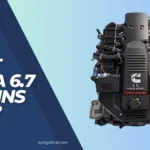The Cummins 55 block has been known to have certain problems leading to engine failure. These problems are Overheating, Improper Lubrication, Manufacturing Defects, Internal Stress and Fatigue, Poor Quality Fuel, and Air Filtration. This article will provide an overview of these issues and their potential impacts on your engine’s performance.
The Cummins 55 block, also known as the “53” block, has gained some notoriety among Cummins engine enthusiasts due to its tendency to crack. The main issue lies in the block’s weak design, particularly around the coolant passages. Over time, this can result in coolant leaking into the engine oil, causing damage and potentially leading to engine failure.
These problems are especially prevalent in engines manufactured between 1998 and 2002. If you own a Cummins engine from this time period, it is crucial to regularly monitor the coolant and oil levels, as well as the engine temperature. Catching any signs of coolant leakage early on can save you from costly engine repairs down the line.
We will delve deeper into the causes, symptoms, and potential solutions to address the Cummins 55 block problems, providing you with the information you need to keep your engine running smoothly.
Cummins 55 Block Problem Solutions
Are you experiencing issues with your Cummins 55 block? Don’t worry, there are several solutions available to address these problems. In this section, we will explore the possible remedies and solutions that can help you overcome the Cummins 55 block problems.
1. Regular Maintenance and Inspections:
Regular maintenance and inspections are crucial for the longevity and performance of your Cummins 55 block. This includes checking for any leaks, tightening bolts, inspecting the cooling system, and changing the oil and filters at recommended intervals. By adhering to a strict maintenance schedule, you can minimize the risk of block problems and keep your engine running smoothly.
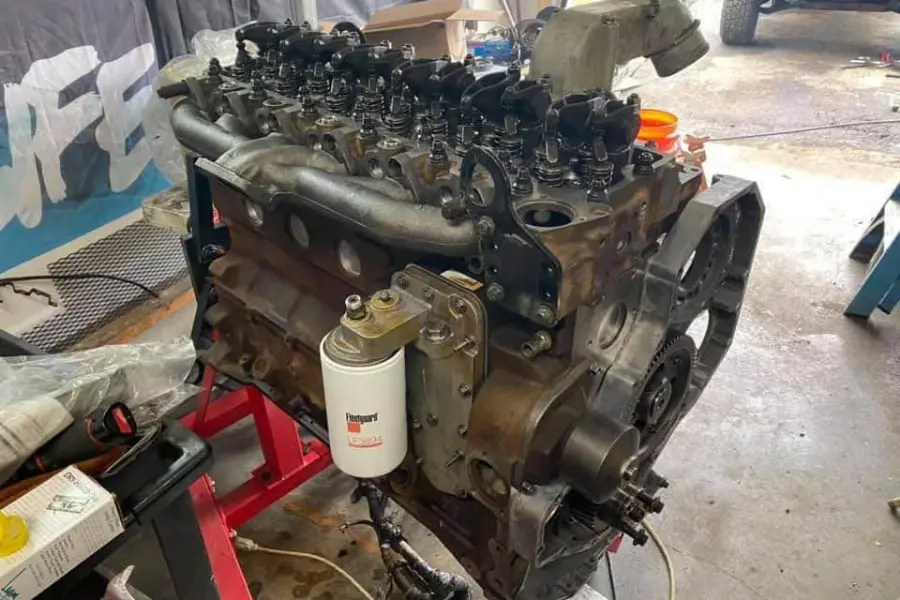
2. Address Cooling System Issues:
The cooling system plays a vital role in the proper functioning of the Cummins 55 block. Overheating can lead to block problems and, in severe cases, even permanent engine damage.
Ensure that the radiator is in good condition, the coolant levels are adequate, and there are no leaks in the cooling system. Regularly flushing the coolant and replacing it with the manufacturer-recommended type can also prevent the build-up of sediment and other cooling system issues.
3. Upgrading to a Reinforced Block:
If you have experienced multiple block problems with your Cummins 55 engine, considering an upgrade to a reinforced block can be a viable solution. Reinforced blocks are designed to handle higher pressures and temperatures, thereby reducing the risk of block failures. These blocks offer enhanced durability and strength, providing peace of mind and improved performance.
4. Quality Maintenance Products:
Choosing high-quality maintenance products, such as oil, filters, and gaskets, can significantly reduce the likelihood of block problems. Opt for reputable brands that meet the manufacturer’s specifications and are designed specifically for your Cummins 55 engine. High-quality products ensure proper lubrication, filtration, and sealing, preventing potential block-related issues.
5. Seek Professional Help:
If you are facing persistent block problems with your Cummins 55 engine, it is advisable to seek professional help. Certified Cummins technicians have the expertise and knowledge to diagnose and address block-related issues effectively. They can provide accurate solutions, perform repairs or replacements, and offer guidance on preventive measures to avoid future problems.

By implementing these possible remedies and solutions, you can tackle Cummins 55 block problems head-on and keep your engine performing at its best. Remember, regular maintenance, cooling system care, upgrades, quality products, and professional assistance are the keys to a trouble-free Cummins 55 engine.
Causes of Cummins 55 Block Problems
The Cummins 55 block is known to face several issues that can affect its performance and reliability. Understanding the underlying causes of these problems is crucial to finding effective solutions and ensuring the longevity of your Cummins engine. Below, we explore the common reasons behind Cummins 55 block problems.
1. Overheating
One of the primary causes of Cummins 55 block problems is overheating. When the engine runs at excessively high temperatures, it strains the block and its components, leading to potential cracks and failures. Overheating can result from a variety of factors, including:
- Inadequate cooling system maintenance
- Insufficient coolant levels or improper coolant mixture
- Faulty thermostat or water pump
- Blockage in the radiator or cooling system
2. Improper Lubrication
Insufficient or improper lubrication within the Cummins 55 block can cause significant damage over time. Without proper lubrication, the engine components may experience excessive friction, leading to increased wear and potential failures. Common causes of inadequate lubrication include:
- Using an incorrect or low-quality lubricant
- Failure to perform regular oil changes
- Ignoring oil pressure warnings
- Oil leaks or blockages in the lubrication system
3. Manufacturing Defects
While Cummins engines are generally reliable, there have been instances of manufacturing defects in the 55 block that can contribute to problems down the line. Such defects may include weak spots, material inconsistencies, or design flaws in the block’s construction. It’s essential to address these defects promptly to prevent more significant issues.
4. Internal Stress and Fatigue
Over time, the Cummins 55 block can experience internal stress and fatigue due to continuous use and exposure to extreme conditions. This stress can lead to cracks, warping, or even complete failure. Factors that contribute to internal stress and fatigue include:
- High engine mileage
- Frequent heavy towing or hauling loads
- Excessive engine revving
- Continuous operation under high load conditions
5. Lack of Maintenance
Regular maintenance is crucial for the longevity and performance of any engine, including the Cummins 55 block. Neglecting routine maintenance tasks can exacerbate existing problems or create new ones. This includes neglecting oil changes, filter replacements, coolant flushes, and general inspections of the engine block and its components.
6. Poor Quality Fuel and Air Filtration
The use of poor quality fuel or inadequate air filtration can introduce contaminants into the engine, causing damage to the Cummins 55 block. These contaminants can clog filters, accumulate within the block, and contribute to premature wear or blockage of critical components.
By understanding these underlying causes of Cummins 55 block problems, you can take preventative measures to maintain the health and reliability of your engine. Regular maintenance, proper lubrication, adequate cooling, and using high-quality fuel and air filters can significantly reduce the likelihood of experiencing issues with your Cummins 55 block.
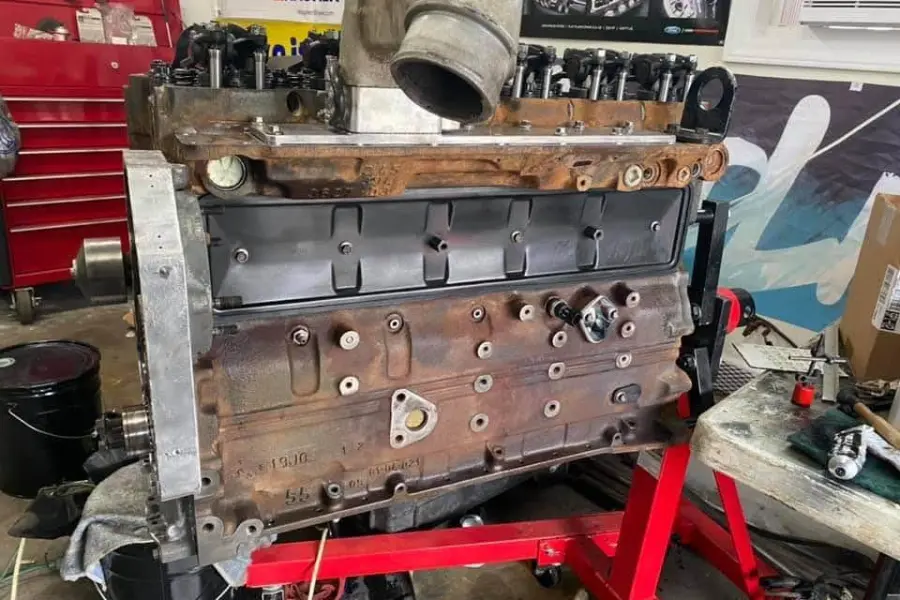
Impact of Cummins 55 Block Problems
Cummins 55 block problems can have a significant impact on engine performance and long-term durability. The 55 block, which refers to certain engine blocks produced by Cummins between 1989 and 2002, has been known to develop cracks and structural weaknesses over time.
These issues can lead to a variety of engine performance problems and decrease the overall reliability and durability of the engine. It is crucial to understand how these problems can impact your engine to ensure proper maintenance and minimize potential damage.
Engine Performance
Cummins 55 block problems can directly affect the performance of your engine. In some cases, cracks or structural weaknesses in the block can result in coolant leakage. This can lead to overheating, which can cause engine misfires, reduced power output, and potential engine failure. Overheating can also damage other engine components such as gaskets and cylinder heads, further impacting the performance of the engine.
Long-term Durability
The long-term durability of an engine is crucial for its overall lifespan and performance. Cummins 55 block problems can compromise the durability of the engine due to the potential for cracks and structural weaknesses. If left unaddressed, these issues can worsen over time and ultimately lead to catastrophic engine failure.
Repairing or replacing a damaged engine block can be costly and time-consuming, making it essential to address any potential problems early on to ensure the long-term durability of your engine.
Proactive Maintenance
To mitigate the impact of Cummins 55 block problems on your engine, it is important to follow a proactive maintenance approach. Regularly inspecting the engine block for any signs of cracking or structural weaknesses can help identify and address the issues before they worsen.
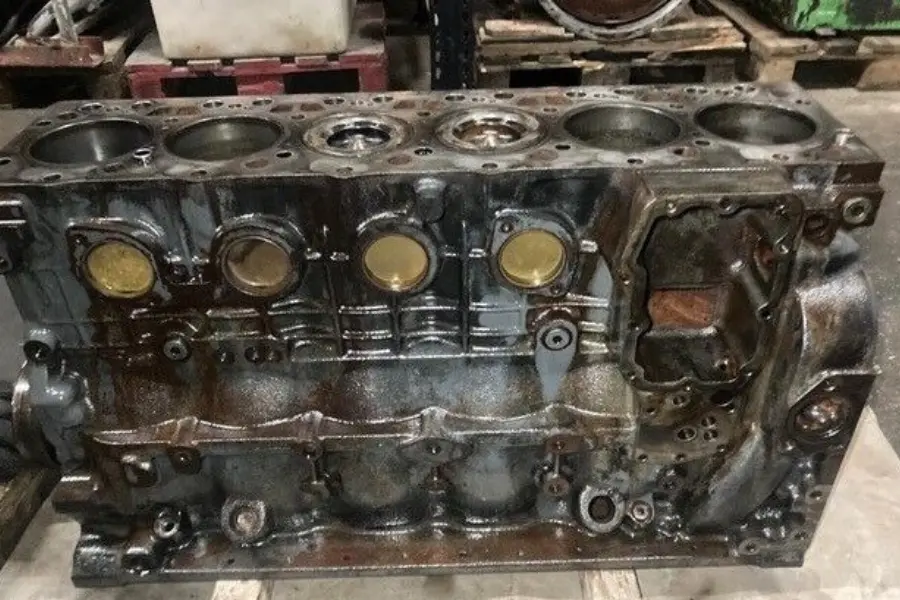
Additionally, maintaining proper coolant levels and cooling system performance can help prevent overheating and minimize the risk of further damage. Adequate lubrication, routine oil changes, and timely repairs can also significantly contribute to the long-term durability and overall performance of your engine.
Preventing Cummins 55 Block Problems
The Cummins 55 block problems have been a nagging issue for many Cummins engine owners. This particular engine model, known for its power and reliability, unfortunately, has a few common problems that tend to crop up over time.
One such problem is the 55 block issue, which has the potential to cause major engine failure if left unchecked. In this blog post, we will discuss some proactive measures you can take to prevent Cummins 55 block problems from occurring in the first place.
Proactive Measures to Prevent Cummins 55 Block Problems From Occurring
When it comes to protecting your Cummins engine from 55 block problems, prevention is truly the best cure. By taking proactive measures, you can significantly reduce the chances of encountering this issue down the line.
Regularly Inspect Your Engine
Regular inspection is key to catching any potential issues before they escalate. Make it a point to visually inspect your Cummins engine regularly, looking for signs of coolant leaks, cracks, or any other visible damage. By catching these problems early on, you can take the necessary steps to prevent further damage and potentially save yourself from an expensive repair.
Monitor Coolant Levels
Effective coolant circulation is vital for maintaining the optimal operating temperature of your engine. Low coolant levels or inefficient circulation could lead to overheating, which in turn puts excessive stress on the engine block. Regularly check your coolant levels and top them up if necessary, ensuring that your engine stays cool and protected.
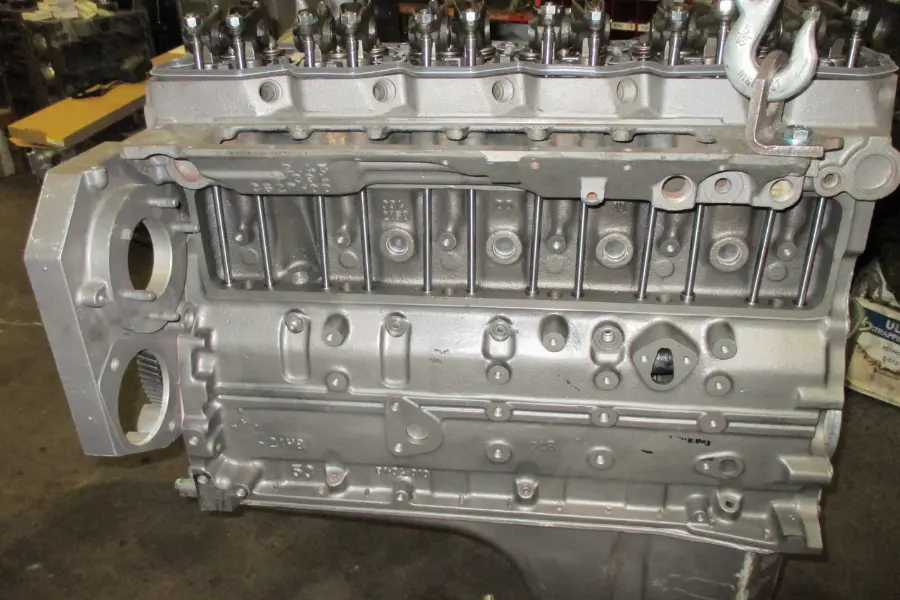
Use the Right Antifreeze Solution
The type of antifreeze you use can play a significant role in preventing 55 block problems. It is crucial to use the correct antifreeze solution recommended by Cummins for your engine. This helps to prevent corrosion and rust inside the engine block, ensuring optimal performance and longevity.
Install Temperature and Pressure Gauges
Installing temperature and pressure gauges allows you to monitor your engine’s vital signs in real-time. By keeping an eye on these gauges, you can quickly identify any abnormal fluctuations that could indicate a potential issue with the 55 block. This early warning system can give you the opportunity to address the problem before it causes more significant damage.
Perform Regular Maintenance
Regular maintenance is key to keeping your Cummins engine in top shape. This includes routine oil changes, filter replacements, and other manufacturer-recommended maintenance tasks. Following the maintenance schedule diligently can help prevent 55 block problems, as well as other potential issues that may arise.
In conclusion, taking proactive measures to prevent Cummins 55 block problems is essential for maintaining the reliability and longevity of your engine. By regularly inspecting and maintaining your engine, monitoring coolant levels, using the right antifreeze, and installing gauges, you can minimize the risk of encountering 55 block issues. Remember, prevention is the key to avoiding costly repairs and ensuring your engine runs smoothly for years to come.
Identifying Cummins 55 Block Problems
In the world of diesel engines, Cummins is a name that stands out for its performance and reliability. However, even the best engines can sometimes encounter problems, and the Cummins 55 block is no exception.
Identifying these block problems early on is crucial to prevent potentially costly damages and ensure the longevity of your engine. In this section, we will explore the common symptoms and signs of Cummins 55 block problems, allowing you to take prompt action and keep your engine running smoothly.
Common Symptoms and Signs of Cummins 55 Block Problems
A faulty Cummins 55 block can manifest itself in various ways. By familiarizing yourself with the common symptoms and signs, you will be able to detect any potential issues and address them before they escalate. Let’s take a closer look at what to watch out for:
Symptom 1: Overheating
One of the most noticeable signs of a Cummins 55 block problem is engine overheating. If you notice your engine temperature gauge consistently reaching high levels or if you see steam coming from under the hood, it may indicate a blockage in the coolant passages or a coolant leak. These issues can cause insufficient cooling and lead to serious engine damage if not addressed promptly.
Symptom 2: Loss of Coolant
A sudden loss of coolant without any visible leaks is another common sign of a Cummins 55 block problem. If you find yourself frequently having to refill the coolant reservoir or notice a decline in the coolant level without any apparent reason, it is likely there is an internal coolant leak. This can be indicative of a cracked block or a faulty head gasket, both of which require immediate attention.
Symptom 3: Engine Misfires or Decreased Performance
If your Cummins 55 engine starts to misfire, exhibit rough idling, or lose power during acceleration, it could be a result of block-related issues. A blockage or restriction in the coolant passages can lead to an inadequate heat transfer, causing engine misfires and reduced performance. Ignoring these symptoms can potentially result in severe engine damage.
Symptom 4: White Smoke From the Exhaust
Excessive white smoke coming from the exhaust, particularly when the engine is warm, can be a sign of coolant mixing with the combustion chamber. This may indicate a block issue such as a cracked cylinder or head, as well as a damaged head gasket. If left unaddressed, this can lead to further internal engine damage and decreased overall efficiency.
If you notice any of these symptoms or signs of Cummins 55 block problems, it is vital to take immediate action. Consulting an experienced mechanic or Cummins specialist is recommended to accurately diagnose and address the underlying issue. By identifying these problems early on and addressing them promptly, you can save yourself from more extensive repairs and enjoy a reliable and efficient Cummins 55 engine for years to come.
Introduction to Cummins 55 Block Problems
The Cummins 55 block has long been recognized as one of the most influential and sought-after engine blocks in the automotive industry. Renowned for its durability and reliability, the Cummins 55 block has powered vehicles across various sectors, including heavy-duty trucks, construction equipment, and marine applications.
Overview of the Cummins 55 Block and Its Significance
The Cummins 55 block is an integral part of the Cummins B Series engines. These engines are celebrated for their exceptional performance and unmatched power, making them the preferred choice for a wide range of applications. One of the notable features of the Cummins 55 block is its cast-iron construction, which provides exceptional strength and longevity.
Its significance can be attributed to a few key factors:
- Unmatched durability: The Cummins 55 block is engineered to withstand the harshest conditions and deliver consistent performance over an extended period. This level of durability ensures that vehicles equipped with the Cummins 55 block can tackle demanding tasks with ease.
- Reliability: When it comes to commercial vehicles and heavy machinery, reliability is paramount. The Cummins 55 block has built a reputation for being highly dependable, reducing the risk of unexpected breakdowns and costly repairs.
- Compatibility: The versatility of the Cummins 55 block is another reason for its significance. It can seamlessly integrate with a wide range of Cummins engines, allowing for easy installation and maintenance.
Common Issues With the Cummins 55 Block
Despite its numerous advantages, the Cummins 55 block has had its fair share of problems. It’s essential to be aware of these issues to ensure proper maintenance and avoid potential complications. Some of the common problems associated with the Cummins 55 block include:
- Cracking: Over time, the Cummins 55 block is prone to developing cracks, especially in high-stress areas. These cracks can compromise the block’s integrity, leading to coolant leaks, loss of power, and engine failure.
- Corrosion: Corrosion is another prevalent problem faced by the Cummins 55 block. Exposure to corrosive elements, such as a mixture of coolant and moisture, can cause the block to deteriorate, resulting in coolant leaks and reduced performance.
- Overheating: The Cummins 55 block may suffer from overheating, especially in heavy-duty applications. This can be attributed to inadequate cooling or improper maintenance, eventually leading to engine damage if not addressed promptly.
While these problems exist, it’s important to note that proper maintenance, regular inspections, and prompt repairs can mitigate the risk of encountering such issues. By staying informed and taking proactive measures, Cummins 55 block owners can continue to enjoy the performance and dependability for which these engines are known.
FAQs on Cummins 55 Block Problems
The main problems with Cummins 55 Block include cracking, overheating, and coolant leaks due to casting issues.
You can identify if your Cummins engine has a 55 Block by looking for the “55” marking on the side of the engine block.
Possible solutions to Cummins 55 Block problems include using aftermarket blocks, performing regular inspections and maintenance, and addressing any issues promptly to prevent further damage.
Conclusion
The Cummins 55 block problems can be a significant concern for truck owners. It’s essential to stay informed and proactive to prevent any potential issues. Regular maintenance and inspections, along with using quality aftermarket parts, can help mitigate these problems.
Understanding the signs and symptoms, such as coolant leaks and engine overheating, is crucial for prompt action. By taking the necessary steps, you can ensure the longevity and reliability of your Cummins engine. So, stay vigilant and keep your truck running smoothly.

